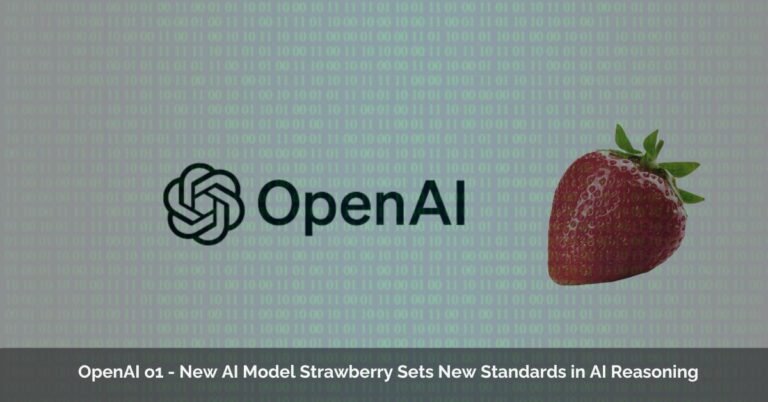The Rise of Information Overload: How Does Pinecone works
Navigating the ever-growing ocean of data has become a crucial challenge in today’s world. Traditional search engines, while powerful, often struggle to understand the nuances of human intent and the complexities of unstructured data. Keyword-based searches can lead to irrelevant results, while the sheer volume of information can be overwhelming.
Enter Pinecone: A Semantic Search Revolution
Pinecone emerges as a game-changer in the search landscape. It’s not just another search engine; it’s a vector database powered by AI, designed to understand the meaning behind your queries and deliver results based on semantic similarity. This means you don’t have to struggle with precise keywords or wade through irrelevant content. Pinecone gets you closer to what you truly need, even if you can’t perfectly articulate it.
Understanding the Power of Vectors:
Traditional databases store data in rows and columns, like tables in a spreadsheet. Pinecone, on the other hand, uses a different language: vectors. These are high-dimensional mathematical objects that capture the essence of an entity, like a document, image, or video. Imagine each entity as a point in a vast, multi-dimensional space. The closer two points are in this space, the more semantically similar they are.
Building the Map: Vectorization and Indexing
Pinecone begins by converting your data (text, images, etc.) into these vectors using powerful machine learning models. These models analyze the data and extract its key characteristics, creating a unique vector representation for each entity. This process is called vectorization.
Next, Pinecone builds a sophisticated index based on these vectors. This index acts as a map, allowing Pinecone to quickly locate the relevant vectors in response to your queries. Imagine it as a detailed map of the high-dimensional space, where each point has a specific location and relationships with nearby points.
Finding the Needle in the Haystack: Querying with Similarity
When you submit a query, Pinecone doesn’t just match keywords; it converts your query into a vector as well. It then uses the map (index) to search for vectors that are most similar to your query vector. The closer the vectors, the more relevant the corresponding entities are to your search.
Benefits beyond Search: A World of Possibilities
Pinecone’s capabilities extend far beyond traditional search. Its ability to understand semantic relationships unlocks a vast array of applications:
- Recommendation Engines: Pinecone can recommend products, music, or content based on your preferences and context, offering personalized experiences.
- Anomaly Detection: Identify unusual patterns in data for fraud prevention, system monitoring, or predictive maintenance.
- Image and Video Search: Find visually similar images or videos with incredible accuracy, revolutionizing image search.
- Chatbots and Virtual Assistants: Build intelligent chatbots and virtual assistants that understand natural language queries and provide relevant responses.
The Future of Search: Powered by AI and Semantics
Pinecone represents a paradigm shift in how we interact with information. It’s not just about finding keywords; it’s about understanding the meaning behind them and connecting you with the most relevant content. As AI and vector technology evolve, Pinecone’s capabilities will continue to expand, paving the way for a future where information retrieval is seamless, personalized, and truly intelligent.
How Does Pinecone works:
Here’s a detailed explanation of how Pinecone works, breaking down each step:
-
Vectorization: Capturing Meaning in Numbers
- Understanding Data through Machine Learning: Pinecone leverages advanced machine learning models, such as BERT (Bidirectional Encoder Representations from Transformers) or Sentence Transformers, to understand the meaning and context of data. These models have been trained on massive amounts of text and image data, allowing them to extract meaningful representations.
- Transforming Data into Vectors: These models convert text, images, or other data into numerical vectors. Each vector is a series of numbers that represents the unique semantic features and relationships within the data. Think of it as creating a numerical fingerprint for each piece of information.
- Capturing Semantic Meaning: The vectors capture not just individual words or pixels but also the context, relationships, and meaning within the data. This enables Pinecone to understand concepts, synonyms, and subtle nuances that traditional keyword-based systems often miss.
2. Indexing: Building a High-Dimensional Map- Organizing Vectors for Rapid Retrieval: Once the vectors are created, Pinecone stores them in a highly optimized vector index. This index is specifically designed to enable fast and efficient search within a high-dimensional space.
- Approximate Nearest Neighbor (ANN) Algorithms: To achieve this speed, Pinecone employs ANN algorithms. These algorithms approximate the nearest neighbors (most similar vectors) to a query vector without having to compare it to every single vector in the index. This significantly reduces search time, making it possible to handle billions of vectors efficiently.
- Continuous Learning and Re-indexing: As new data is added or existing data changes, Pinecone can re-index the vectors to ensure the index always reflects the latest information. This allows for real-time updates and continuous improvement of search results.
3. Querying: Finding Similarity in a Sea of Information
- Vectorizing the Query: When a user submits a query, Pinecone doesn’t just match keywords. It converts the query itself into a vector using the same machine learning models used for vectorization. This ensures that the query is understood in terms of its semantic meaning, not just its individual words.
- Searching the Vector Space: Pinecone then searches the index to find the vectors that are most similar (nearest neighbors) to the query vector. It uses the ANN algorithms to efficiently navigate the high-dimensional space and locate the most relevant results.
- Ranking and Returning Results: The results are ranked based on their similarity to the query vector, with the most relevant results appearing at the top. Pinecone also returns the associated metadata (e.g., text, image URLs, product information) for the retrieved vectors, providing context and additional details for the user.
Key Takeaways:
- Pinecone’s vector-based approach allows it to understand semantic meaning and relationships, leading to more relevant and accurate search results.
- ANN algorithms enable fast and efficient search within high-dimensional vector spaces, even when dealing with massive datasets.
- Pinecone’s ability to handle various data types (text, images, etc.) and its real-time updates make it a versatile and adaptable solution for modern search and AI-powered applications.
Key Advantages of Pinecone:
Pinecone offers several key advantages over traditional search methods, making it a powerful tool for a variety of applications. Here are some of its most notable benefits:
-
Semantic Search:
- Go beyond keywords: Pinecone understands the meaning and intent behind your query, not just the exact keywords. This leads to more relevant and accurate results, even for complex or nuanced searches.
- Contextual understanding: Pinecone can consider the context of your query, taking into account factors like location, previous searches, and user preferences. This personalizes the search experience and delivers results that are truly relevant to your needs.
-
Scalability and Performance:
- Handle massive datasets: Pinecone can efficiently handle billions of vectors, making it ideal for large-scale applications like product search, recommendation engines, and image retrieval.
- Lightning-fast search: Advanced indexing and ANN algorithms enable Pinecone to deliver results in milliseconds, even with large datasets. This ensures a smooth and responsive user experience.
-
Real-Time Updates and Freshness:
- Always up-to-date: Pinecone indexes data in real-time, ensuring that your search results reflect the latest information. This is crucial for applications like news feeds and dynamic content.
- Continuous learning: Pinecone can continuously learn and adapt to new data and user behavior. This allows it to improve its search accuracy and relevance over time.
-
Flexibility and Versatility:
- Supports various data types: Pinecone can handle text, images, audio, and other data types, making it a versatile tool for a wide range of applications.
- Seamless integration: Pinecone offers simple APIs and integrations with popular programming languages and platforms, making it easy to incorporate into existing workflows.
-
Security and Reliability:
- Enterprise-grade security: Pinecone is SOC 2 and HIPAA compliant, ensuring the security and privacy of your data.
- High availability and scalability: Pinecone offers a reliable and scalable architecture, ensuring continuous operation and uptime even for mission-critical applications.
Overall, Pinecone’s combination of semantic search, performance, real-time updates, flexibility, and security makes it a game-changer in the search landscape. Its ability to understand the true meaning of your queries and deliver highly relevant results in a fast and efficient manner opens up a world of possibilities for businesses and individuals alike.
Key Takeaways:
- Pinecone’s vector-based approach allows it to understand semantic meaning and relationships, leading to more relevant and accurate search results.
- ANN algorithms enable fast and efficient search within high-dimensional vector spaces, even when dealing with massive datasets.
- Pinecone’s ability to handle various data types (text, images, etc.) and its real-time updates make it a versatile and adaptable solution for modern search and AI-powered applications.
Challenges and Limitations of Pinecone: Exploring the Flip Side
While Pinecone offers compelling advantages and diverse applications, it’s important to acknowledge its limitations and ongoing challenges:
-
Data Quality and Bias:
- The quality and bias present in the training data used for vectorization can influence search results, potentially perpetuating stereotypes or inaccuracies.
- Ensuring diverse and unbiased datasets is crucial for fair and ethical AI applications.
-
Explainability and Interpretability:
- Understanding the reasoning behind Pinecone’s search results can be challenging, making it difficult to explain why specific results are returned.
- Developing methods for transparent and interpretable AI is essential for ensuring user trust and building reliable systems.
-
Computation and Energy Consumption:
- Training and running vector databases can be computationally expensive, requiring significant energy resources.
- Optimizing algorithms and hardware utilization is crucial for sustainable and responsible AI development.
-
Security and Privacy Concerns:
- Storing and processing sensitive data in Pinecone necessitates robust security measures and clear privacy policies.
- Adherence to data privacy regulations and secure user data handling is essential for building trust and mitigating risks.
-
Adaptability and Domain Specificity:
- Pinecone’s performance can vary depending on the specific domain and data type.
- Adapting and fine-tuning models for different applications requires expertise and careful training.
Overall, acknowledging these challenges and actively working on solutions is crucial for responsible and sustainable development of Pinecone and its potential applications.
Conclusion and Key Takeaways of Pinecone:
Revolutionizing Search with Vector Intelligence:
Pinecone represents a paradigm shift in how we interact with information. It’s not just a search engine; it’s a vector database powered by AI that understands the meaning behind your queries and delivers results based on semantic similarity, not just keywords. This opens up a world of possibilities for more relevant, personalized, and accurate search experiences.
Key Takeaways:
- Semantic Search: Pinecone goes beyond keywords to understand the meaning and intent behind your queries, leading to more relevant and accurate results.
- Real-Time Updates: Pinecone indexes data in real-time, ensuring your search results always reflect the latest information.
- Scalability and Performance: Pinecone can handle billions of vectors efficiently, making it ideal for large-scale applications.
- Flexibility and Versatility: Pinecone supports various data types and integrates seamlessly with existing workflows.
- Unlocking a World of Applications: Pinecone’s capabilities extend beyond search, empowering AI applications like recommendation engines, anomaly detection, image and video search, and more.
Challenges and Future Directions:
- Bias Detection and Mitigation: Addressing potential bias in training data and ensuring fair and ethical AI models.
- Explainability and Transparency: Developing methods to explain how Pinecone arrives at its results for user trust and accountability.
- Efficiency and Sustainability: Optimizing algorithms and hardware to reduce computational cost and energy consumption.
- Security and Privacy: Implementing robust security measures and adhering to data privacy regulations.
- Adaptability and Domain Specificity: Fine-tuning models for different domains and tasks to improve performance and applicability.
By actively addressing these challenges and fostering responsible development, Pinecone has the potential to revolutionize how we access and interact with information, shaping the future of search and AI applications across diverse fields.
Remember, Pinecone is still under development, but its potential is vast. It’s an exciting technology to watch as it continues to evolve and unlock the full power of AI for search and beyond.
WRITTEN BY: AMEERAH

























